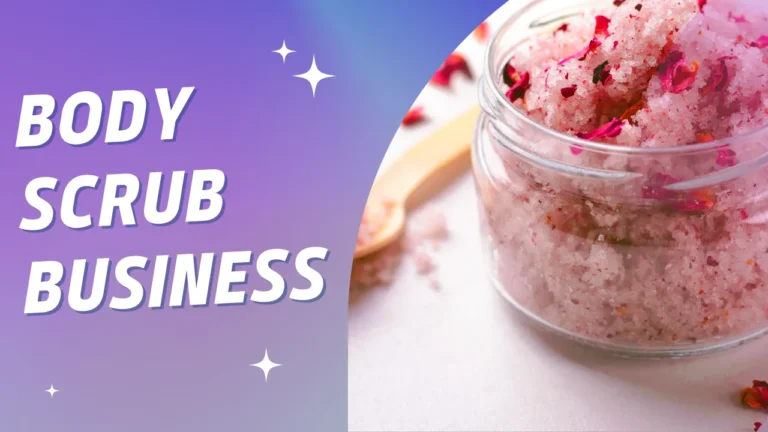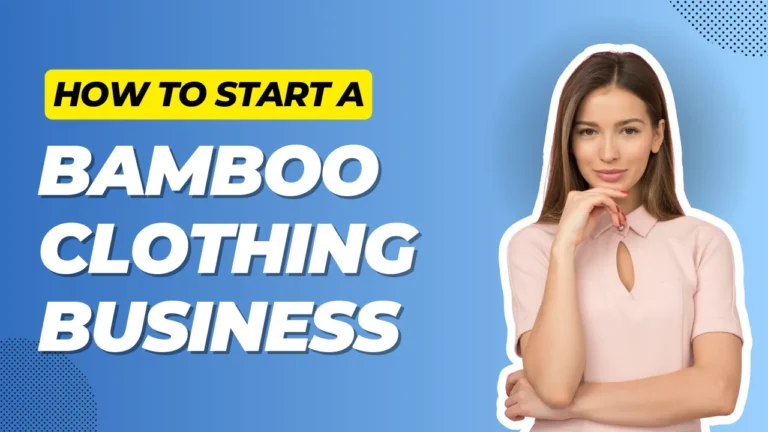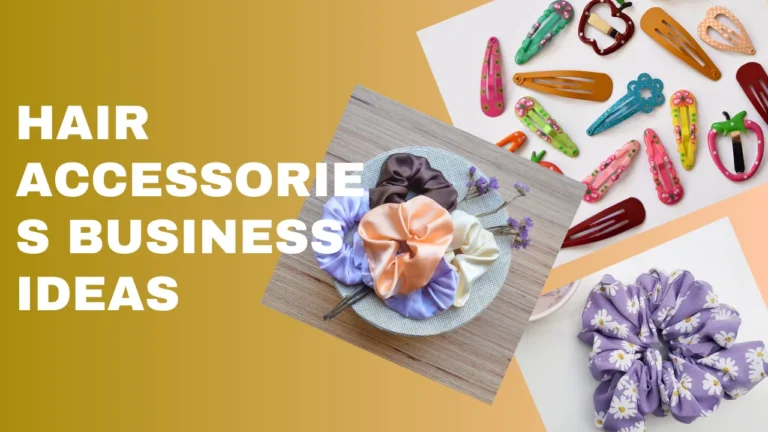Are you looking to start a scarf business in 2024 and want to make a substantial profit?
YOU are coming to the right place; today, in this post, you will learn the complete process of starting a scarf business from scratch, with steps.
In fashion, scarves are more than just accessories; they are expressions of style and personality. You can offer unique and exquisite designs to your customers that capture the essence of individuality.
Scarf business can be profitable, particularly for those offering unique designs with high-quality materials. One needs proper planning, unique designs, and the right marketing strategy.
Scarves have gained tremendous popularity in recent years, and selling scarves is an excellent idea. These are fashionable and aesthetic and an essential accessory for women of all ages.
They are also affordable, making them an attractive option for the fashion-conscious consumer.
What we’ll discover in this post:
- Scarf business ideas and basics
- Industry and Market Overview
- The process of starting from scratch
- Marketing and sales strategies
It’s an amazing idea, but to turn the opportunity and your passion into a profitable scarf line requires proper planning, a solid foundation, and a good understanding of the target market.
Now, get ready to learn the step-by-step process.
Is the scarf business profitable?
Yes, starting a scarf business is a profitable idea, and it is also a growing industry. If you have a unique selling point, a quality product, and a target market, it is possible to create a brand in this industry.
The global scarf market has got you covered.
According to the latest reports of (industrygrowthinsights.com), the global scarf market size will grow at a CAGR of 4.5% during the forecast period (2021-2030). By 2030, experts estimate that the market will reach a whopping USD 3.2 Billion.
- Scarves are versatile accessories for personal style expression.
- Worn for warmth and fashion around the neck, head, or waist.
- Affordable luxury, booming market for individual style.
The profitability of starting the business:
- Popular fashion accessory
- Wide range of prices and styles
- Relatively low cost to start
- Easy to sell
- Growing demand
- A diverse range of customers
- Easy to start a business idea
- High-profit margins
- Opportunities for creativity and innovation
You can learn about the scarf industry by self-accessing industry-related websites.
Understand different target markets (men and women) and collect information about popular trends, styles, sizes, and fabric types (silk, cotton, faux fur, linen, cashmere, and others).
Before you start, know the potential challenges you will face when running a venture. In the scarf industry, some difficulties:
- Crowded market: With many competitors, it is hard to stand out.
- Seasonal sales: Winter boom, rest of year slow.
- Fast fashion: Trends change, gotta adapt fast.
- Material sourcing: Quality at good prices is tricky.
- Production: Balancing cost, quality, and ethics is tough.
- Marketing: Require more efforts to reach customers in the competition.
- Pricing: Balancing value and competition is a struggle.
- Regulations: Complying with rules adds complexity.

Here is the graph of the seasonal trend of ‘scarf’; you can see the trend (Google Trends).
How to start a scarf business?

1. Find your niche
You must choose the niche for the scarf business line to make a unique identity.
Initially, focus on one specific type of scarf.
Identify your specific target markets, such as luxury silk or eco-friendly wool scarves; you can differentiate yourself from competitors and cater to a unique customer base.
You can also consider factors like material, design, and price range to carve out your niche and create a brand that resonates with your target audience.
Consider the given points when choosing a niche:
- Material: silk, cashmere, or wool.
- Style: Infinity scarves, neckerchiefs, pashminas, etc.
- Occasion: for weddings, formal events, or everyday wear.
- Location: city, state, specific geographic location, or country.
- Target audience: women, men, children, youngsters, older, etc.
Many types of scarves are available, so choosing the one that best suits your goal, target market, competition, and profitability is important.
Requires proper research, planning, dedication, hard work, patience, and continuous learning to adapt to the evolving market trends.
Here is the basic difference between material type, characteristics, and focus target market.
| Type | Material | Characteristics | Best For |
|---|---|---|---|
| Silk | Silk | Luxurious, elegant, warm | Fashion statement |
| Wool | Wool | Warm, cozy, durable | Winter Weather |
| Cashmere | Cashmere | Soft, warm, lightweight | Luxury |
| Pashmina | Pashmina wool | Soft, luxurious, lightweight | Fashion statement |
| Faux fur | Synthetic fibers | Affordable, sustainable | Winter Weather |
| Printed | Varied | Adds a pop of color | Fashion statement |
| Solid color | Varied | Versatile, can be dressed up or down | Everyday wear |
| Knitted | Yarn | Warm, cozy, customizable | Classic |
| Bandana | Cotton | Versatile, it can be worn in many ways | Everyday wear |
Choose your scarf niche wisely:
- Know yourself: What scarf styles excite you? What skills/resources do you have?
- Know the market: What’s trending? Who are your competitors? What’s profitable?
- Know your audience: Who are you selling to? What are their needs/interests?
- Test & refine: Start small, gather feedback, and adapt your niche as you learn.
2. Do your research

After niche selection, the next step is conducting market research to stand out from the competition; understanding the market trend, target customers, recent fashion culture, and demographics is necessary.
Researching the market is an essential process for every successful business, and it is the best strategy to understand the customer base, market potential, and opportunity.
Understand the market trend by analyzing past growth data, online product sales reports, social media analytics, Google trends data, and accessing local business sales data.
What do you need to research?
- Find out who your target customers are
- Find trending scarves and designs.
- Research competition and competitors
- Understand the scarf industry properly.
- Define your unique selling proposition.
- Plan good marketing strategies.
- Learn the pricing structure and sales.
Here are some points for researching to know your target audience and competition.
- SWOT analysis: Identify the strengths, weaknesses, opportunities, and threats of the market and your competitors to create a product that fulfills the market demand.
- Demographic research: Study the demographic (age, gender, income, education, location, and lifestyle) that help you to understand the target audience.
- Identify target customers: Analyze the popularity of scarf -market trends, demand, customer needs, and social media to identify the specific audience preference.
- Knowing market competition: Understand competitors, product pricing models, and product quality to develop products that differentiate your brand.
3. Learning the skills

Before you start the business, learn various skills such as (product sourcing, finding suppliers, designing, manufacturing, sewing, marketing, branding, inventory management, sales, and customer service), are important.
So, first of all, focus on developing those skills that will help you establish your scarf business and successfully build your career in this field.
You can’t start without learning soft skills and knowledge of scarf manufacturing.
Making a scarf requires a mix of creativity and a practical skill set.
The most important skills are designing and learning the production process of the scarf. Making a scarf can depend on the method you choose. Also, the raw material can be different.
Choose your method:
- Knitting: It is a classic, simple, and versatile option, but you must learn basic techniques.
- Crocheting: Similar to knitting but using a single hoos, it is easier to learn the basic stitches but less versatile in design.
- Sewing: You can make simple scarves by sewing fabric rectangles together. It’s great for using a fabric scarf or unique prints.
Choose the best production method focusing on your target audience, skill set, resources, and profit margin.
Not only learning to manufacture is enough; one needs to learn other skills such as:
- Marketing and branding: Social media promotion, Content marketing, SEO, paid advertising, online presence, sales strategies, etc.
- Business basics: Financial planning, pricing strategies, legal formalities, e-commerce platforms, etc.
Where to learn the skills?
Depending on your passion, interest, and resources, you can learn how to make a scarf from different sources (online, offline, or self-practicing).
- Learn from YouTube (free of cost). You can watch the step-by-step instructional videos.
- Many local yarn stores or people provide hands-on training classes for beginners, so find and learn.
- Self-practice is the most suitable, recommended, and best way for everyone to develop these skills. Practice is key to making some unique.
4. Create a scarf business plan

Based on your market research and personal insights, next, develop a compelling business plan to set up your brand new scarf business.
A strong plan helps you achieve your goals and is a strategic guidepost for future initiatives. Also, it is a fundamental road map for success when establishing a venture.
Create a plan to define your vision, strategy, and goals.
So, let’s discuss how to create a plan and its basic information.
- Business Summary: Outline your strategies: high-quality (material), unique design scarf (color, pattern, design, features, etc.), target audience, affordable product pricing, etc.
- Company Description: Define your business or company, business name, goals, purpose of selling scarves, and other important overviews.
- Product Description: Write about production methods, materials, machinery, packaging, quality control, design, patterns, colors, etc.
- Marketing Plan: Free and paid marketing, increasing brand awareness, focusing on local marketing, word-of-mouth, and branding through social media marketing.
- Financial Plan: Estimate your startup costs, including equipment, supplies, and legal requirements. Funding is needed for initial and ongoing expenses such as rent and staff salaries. Include the projected revenue goal, profitability, ROI, and funding sources.
- Business Requirements: Scarf-making requires raw materials, machinery, supplies, suitable space, and a workforce (staff for sewing, cutting, pattern design, packing, management, and selling).
Given that outlines are basic and not comprehensive, research to write a detailed plan.
You can learn how to write a business plan from online resources and some popular blogs (Bplans, Score); they offer templates for writing a plan focusing on a particular industry.
5. Choose a business name
Along with everything, you must pay attention to personal branding, in which the business name and logo are Important.
For your scarf business, you can choose a name related to your products (scarf) that should be unique, attractive, and professional.
- The business name helps in word-of-mouth promotion and creating an identity.
- Business names and logos are essential parts of branding.
- You should not use numbers, underscores, utensils, and symbols in your business name.
- If the name is web-friendly, memorable, and unique, it is best for branding and marketing.
- Research for a good and brandable name (don’t use copyrighted names).
Buy a domain name:
In the digital age of marketing, establishing a professional and robust online presence is crucial, and building a brand identity online is equally essential.
Registering a domain for a web online presence, which enables the creation of a distinctive online identity, is a vital strategy that can pave the way for growth and success with the trend.
- Buy a domain name: The domain name is your website address
- Domain name: Choose a name such as (Yourbusiness.com)
- Domain extension: (.com, .net, .org, .co, .us.)
- Where to buy a domain: You can buy from Namecheap or Goddaddy.
6. Choose a suitable working space.
Whether starting a scarf manufacturing or retail business, you will need a good location for your inventory, sewing workplace, and store setup.
Consider the given factors when selecting your scarf business; it doesn’t matter how you want to operate the product line (online, retail, wholesale, or manufacturing).
| Factor | Consideration |
|---|---|
| Cost | Rent, utilities, and other expenses |
| Accessibility | Easy to get to for target customers |
| Space | Size of business and amount of inventory |
| Amenities | Parking, public transportation, break room |
| Atmosphere | Conducive to productivity and creativity |
| Type of scarf business | Retailer or manufacturer |
| Target market | Location of target customers |
| Competition | Avoid locating too close to competitors |
| Future | Potential to grow with business |
When choosing the place, rent it with all the facilities – electricity, transportation, workforce availability, and a population area (near the target market).
Also, considering the required facility, those looking to set up a home-based small-scale scarf line can create a personal workspace to get started.
You can sell scarves both online and offline.
Location for storefront setup:
So, choosing a location is crucial; after market research and identifying the target audience, you have to determine the demand for scarves in the local area for selling them by opening an offline retail store.
Understand the demographics, income levels, and consumer behavior to determine whether there is a viable market for your business.
Also, check out the competition in the area; if there are already established clothing shops (selling scarves), the market could be competitive for you as a new startup.
7. Source raw materials and supplies.
Source high-quality raw materials and supplies to make a scarf focusing on diverse customer preferences.
Find the best supplier for sourcing materials such as – fabric (silk, wool, cashmere, etc.), and buy the required tools, machinery, and equipment.
When purchasing, understand the requirements. Consider price, reliability, quality, and suppliers’ ability to meet your demand.
- Fabric (natural, synthetic, blend)
- Yarn (for knitting/crocheting)
- Thread (for sewing)
- Trims & embellishments
- Labels and packaging
| Category | Item |
|---|---|
| Raw materials | Yarn, fabric, and other materials (lining fabric, trims, embellishments) |
| Equipment | Sewing machine, cutting machine, iron, sewing needles, scissors, measuring tape, pattern weights |
| Supplies | Thread, seam ripper, pins, fabric markers, tracing paper |
| Machinery | Knitting machine, weaving loom, embroidery machine |
Where to source the raw material?
Before buying anything, proper research, planning, selecting reputed or trusted supplies, and understanding the requirements for making the product is most important.
- Wholesale suppliers: Fabric.com, Dharma Trading, Mood Fabrics, etc.
- Yarn stores: Michael’s, Joann Fabrics, Yarn Paradise, Etsy (yarn).
- Online retailers: Amazon, eBay, Etsy (online)
- Local businesses: Local fabric/yarn stores & craft fairs.
- Direct from source (unique/sustainable)
Start small experiments with different materials; when you buy, negotiate to buy bulk to get more discount, analyze the prices, compare with different supplies, and choose the best.
8. Hire staffing and workforce.
Hire and retain good staff/workforce for your scarf business; in the scarf line, many types of tasks are included – designing, production, knitting, crocheting, sewing, packaging, marketing, sales, inventory management, etc.
So, the essential step is to hire a skilled workforce for all individual work. Good staffing is necessary to complete the different roles in scarf making.
Designers:
- Hire designers to create new designs and styles of scarves that will appeal to customers. Also, you need to follow the market trend and demand.
- Your designer may have backgrounds in fashion design, textile design, or graphic design, so they can easily perform their tasks.
Production staff:
- Hire staff for scarf production, for producing the scarves, which includes (designing and finishing the products).
- Depending on the business scale, production staff may work in-house or be contracted to a third-party manufacturer.
Sales and marketing staff:
- Hire good marketing staff for creating marketing materials, managing social media accounts, website optimization, paid promotion, and many other tasks.
- Hire a manager to complete tasks such as (managing finances, handling customer service inquiries, and maintaining records).
9. Obtain license and permits
Obtaining the licenses and permits and fulfilling legal needs are necessary for running a business legally, so when you obtain them, follow the government, state, and local regulations.
The specific requirements depend on the location, so research the local laws and regulations and ensure all requirements are met.
Common licenses and permits required for a scarf business may include the following:
- Registering the business.
- Paying applicable taxes.
- Obtaining necessary licenses/permits.
- Follow the product safety regulations.
- Label your scarves correctly.
- Comply with employment laws (if applicable).
Consult with your legal adviser to know the required process.
Business registration:
For company registration, defining the business entity depending on your goals and planning, you should select whatever structure you want to start with.
Need to register as per the state, local, and federal requirements.
Business structure types:-
- Sole proprietorship
- Partnership
- Limited Liability Company (LLC)
- Corporation
You can contact a legal adviser, accountant, or tax specialist to guide you about legal formalities and learn the different business structures, pros, and cons from them.
Online resources to learn about legalities:
Apply for business insurance.
As a scarf business owner, you must obtain business insurance to protect your assets against unforeseen events and help you recover from financial losses.
Business insurance provides financial protection against various types of losses, such as loss of equipment breakdown, natural disasters, or other unforeseen events.
If any losses occur, the insurance policy can provide coverage for that.
Insurance types and benefits:
- General Liability: Someone trips in your store? Covered.
- Property: Flood damages equipment? Reimbursed.
- Business Interruption: Storm closes shop? Income covered.
- Product Liability: Scarf mishap? Lawsuits covered.
10. Develop a marketing strategy

Once everything is ready, the step is marketing and selling those products. Plan to attract customers to your products, shop, or online store.
Promote your scarf business right now, following the current market trend.
There are various marketing channels online (digital media, social media, SEO, influencer, content marketing, paid advertising, etc), offline (print media, TV ads, direct mail, event marketing, word-of-mouth, trade shows, etc).
You cannot grow the business without marketing, so follow a suitable or reliable strategy.
Here are some ideas to promote a business successfully.
- Digital Marketing– SEO, SEM, Social Media Marketing
- Social Media Marketing– Facebook, Instagram, YouTube videos, Twitter, etc.
- Content Marketing: Write blog posts, create videos, post pins on Pinterest, etc.
- Paid Marketing– PPC, Google & Facebook Ads, Influencer Marketing, Affiliate Marketing.
- Other Marketing– Word-of-Mouth, Print, Banner, Newspaper ads, etc.
Research, learning, and experiments will give you the best results.
Develop a website for an online presence.
A professional website helps build a brand, attract customers from Google searches (through SEO), increase customer engagement, and help market a product online.
Establishing a website is indispensable if you aim to expand your business using the latest marketing strategies and stay ahead of the trends.
Building a website can help develop an online presence in the digital arena, distinguishing your brand from others in the market.
So, to increase brand awareness and credibility, create a website (include your product details, pricing, features, and upload images; you can also include a buying option).
Requirements for a website:
- Buy domain and hosting: Choose the best hosting; reliability matters.
- Select a CMS platform (WordPress is best): Easy for updates and edits.
- SEO (Search engine optimization): Get seen in search results.
- Analytics (Google Search Console and Analytics): Track website traffic and user behavior.
How to sell a scarf? Setup an online store
Selling the product online can be a better option than an offline retail store.
However, you should also focus on different sales channels and experiment with what type of sales channel is more suitable for selling scarf.
Selling scarves online is proven; the best ideas still depend on your resources and goals.
You can sell by creating an online store, listing products on popular marketplaces, or selling directly through social media.
Also, you can combine all methods. Initially, focusing on one method to become successful is recommended, then expanding with learning.
- Marketplaces: List your scarves on Etsy, Amazon, or similar platforms (easy reach, but high competition and fees).
- Social media: You can sell directly through (Instagram, Facebook, or TikTok), which requires social media marketing skills.
- Create an E-commerce website: Build your store using platforms like Shopify, Wix, Magneto, or similar websites.
How to create an online scarf store:
- Choose an e-commerce platform: Shopify, WooCommerce, and Magento.
- Design your store with proper customization, features, and navigation.
- Add products: List your products (scarves) – upload high-quality photos, product descriptions, pricing, and other necessary information.
- Setup payment processing: You need to add different types of payment methods.
- Market your store: The best way to promote a store online is (through social media marketing, search engine optimization, and paid advertising).
That is the guide for starting; we’ve discussed the required steps to set up a scarf business, and I hope the blog post is informative and useful.
Here are a few common questions that may also come to your mind; let’s check and learn some new information. Still, if you have any other questions, you can comment below.
You may also like:
Frequently Asked Questions (FAQs)
Is selling scarves a good business?
Selling scarves can be a good and profitable business idea
(low startup costs, diverse markets, good demand), but success depends on strategy and execution; you may face seasonality and competition. Do your research and start in the right way with proper planning.
How do I sell a scarf?
You can sell a scarf through various channels (online and offline). Creating an online store on social media platforms, listing products at online marketplaces, directly to customers, and to wholesalers in bulk quantity.
What material makes a good scarf?
Materials like silk, cashmere, wool, and cotton make good scarves depending on warmth, softness, and durability.
What is the softest scarf material?
Cashmere is considered the softest scarf material.
What types of scarves are in style?
There are many types of scarves in style: Cashmere, Infinity Scarf, Silk scarf, Chiffon, Pashmina, Linen, Velvet, Wool, and bold print scarf.





